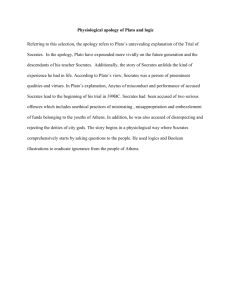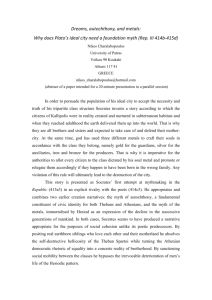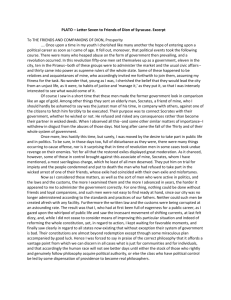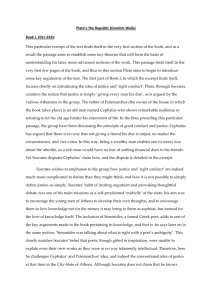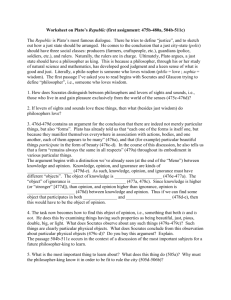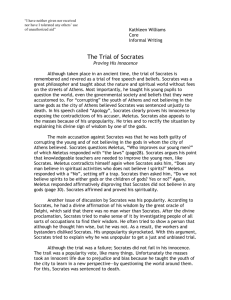SOCRATES Project Description
advertisement
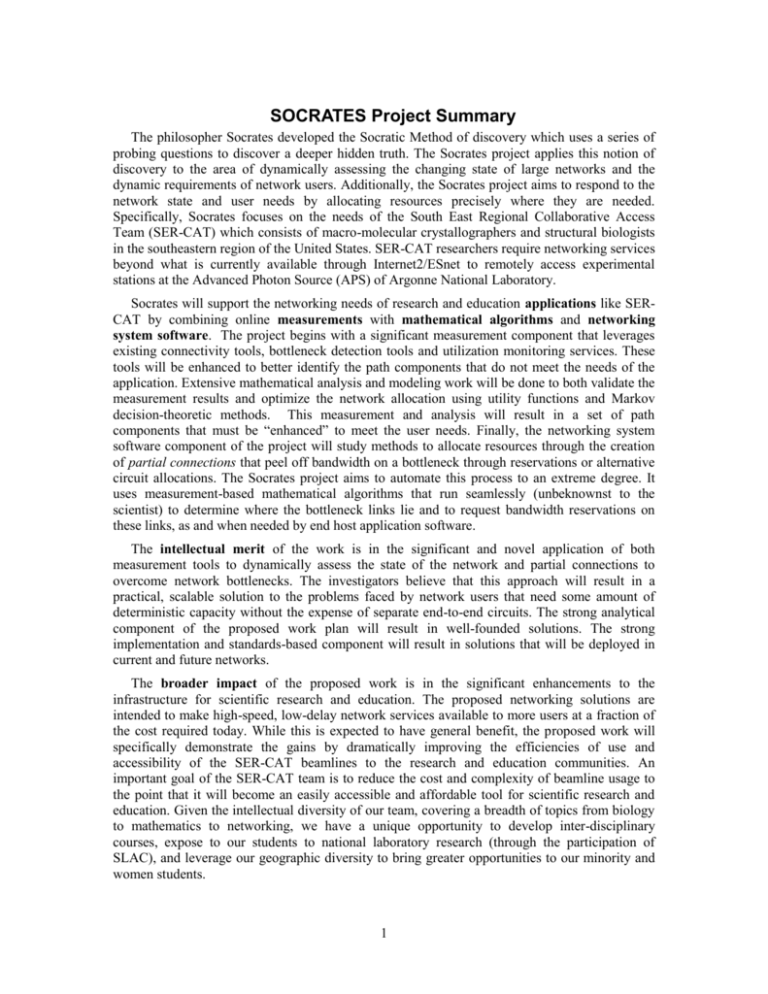
SOCRATES Project Summary The philosopher Socrates developed the Socratic Method of discovery which uses a series of probing questions to discover a deeper hidden truth. The Socrates project applies this notion of discovery to the area of dynamically assessing the changing state of large networks and the dynamic requirements of network users. Additionally, the Socrates project aims to respond to the network state and user needs by allocating resources precisely where they are needed. Specifically, Socrates focuses on the needs of the South East Regional Collaborative Access Team (SER-CAT) which consists of macro-molecular crystallographers and structural biologists in the southeastern region of the United States. SER-CAT researchers require networking services beyond what is currently available through Internet2/ESnet to remotely access experimental stations at the Advanced Photon Source (APS) of Argonne National Laboratory. Socrates will support the networking needs of research and education applications like SERCAT by combining online measurements with mathematical algorithms and networking system software. The project begins with a significant measurement component that leverages existing connectivity tools, bottleneck detection tools and utilization monitoring services. These tools will be enhanced to better identify the path components that do not meet the needs of the application. Extensive mathematical analysis and modeling work will be done to both validate the measurement results and optimize the network allocation using utility functions and Markov decision-theoretic methods. This measurement and analysis will result in a set of path components that must be “enhanced” to meet the user needs. Finally, the networking system software component of the project will study methods to allocate resources through the creation of partial connections that peel off bandwidth on a bottleneck through reservations or alternative circuit allocations. The Socrates project aims to automate this process to an extreme degree. It uses measurement-based mathematical algorithms that run seamlessly (unbeknownst to the scientist) to determine where the bottleneck links lie and to request bandwidth reservations on these links, as and when needed by end host application software. The intellectual merit of the work is in the significant and novel application of both measurement tools to dynamically assess the state of the network and partial connections to overcome network bottlenecks. The investigators believe that this approach will result in a practical, scalable solution to the problems faced by network users that need some amount of deterministic capacity without the expense of separate end-to-end circuits. The strong analytical component of the proposed work plan will result in well-founded solutions. The strong implementation and standards-based component will result in solutions that will be deployed in current and future networks. The broader impact of the proposed work is in the significant enhancements to the infrastructure for scientific research and education. The proposed networking solutions are intended to make high-speed, low-delay network services available to more users at a fraction of the cost required today. While this is expected to have general benefit, the proposed work will specifically demonstrate the gains by dramatically improving the efficiencies of use and accessibility of the SER-CAT beamlines to the research and education communities. An important goal of the SER-CAT team is to reduce the cost and complexity of beamline usage to the point that it will become an easily accessible and affordable tool for scientific research and education. Given the intellectual diversity of our team, covering a breadth of topics from biology to mathematics to networking, we have a unique opportunity to develop inter-disciplinary courses, expose to our students to national laboratory research (through the participation of SLAC), and leverage our geographic diversity to bring greater opportunities to our minority and women students. 1 2


